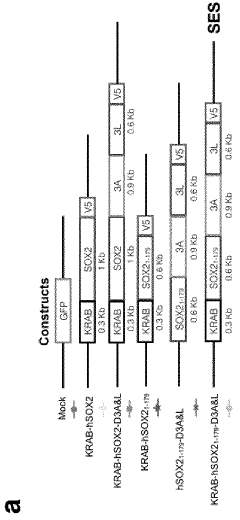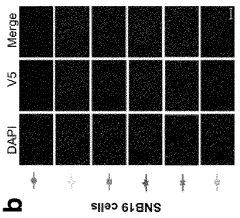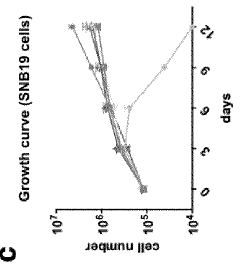Gene Therapy Approaches: Unlocking Genetic Cures - Eureka
OCT 8, 20244 MIN READ
Generate Your Research Report Instantly with AI Agent
Patsnap Eureka helps you evaluate technical feasibility & market potential.
Gene Therapy Background and Objectives
The primary objective of gene therapy is to introduce genetic material into cells to compensate for abnormal genes or provide therapeutic benefits. Gene therapy approaches can be broadly categorized into two main strategies: in vivo and ex vivo.
In vivo gene therapy involves directly delivering the therapeutic genetic material to the target cells within the patient's body. This approach is particularly suitable for treating diseases affecting specific tissues or organs, such as the liver, lungs, or brain. Various delivery methods, including viral vectors and non-viral methods like lipid nanoparticles, are employed to facilitate gene transfer.
In vivo gene therapy involves directly delivering the therapeutic genetic material to the target cells within the patient's body. This approach is particularly suitable for treating diseases affecting specific tissues or organs, such as the liver, lungs, or brain. Various delivery methods, including viral vectors and non-viral methods like lipid nanoparticles, are employed to facilitate gene transfer.
Market Demand for Gene Therapy Solutions
- Unmet Medical Needs
Genetic disorders and inherited diseases pose significant challenges, with limited treatment options available. Gene therapy offers a promising approach to address these unmet medical needs by targeting the root cause of genetic conditions. - Potential Market Size
The global gene therapy market is projected to experience substantial growth, driven by the increasing prevalence of genetic disorders, advancements in gene delivery technologies, and the development of personalized medicine approaches. - Therapeutic Areas
Gene therapy holds significant potential in various therapeutic areas, including:- Oncology: Treating cancer by introducing tumor-suppressing genes or modifying immune cells
- Neurological disorders: Addressing conditions like Parkinson's, Alzheimer's, and muscular dystrophies
- Cardiovascular diseases: Targeting genetic factors contributing to heart diseases
- Rare genetic disorders: Treating conditions like cystic fibrosis, hemophilia, and inherited blindness
- Regulatory Landscape
The regulatory environment for gene therapy is evolving, with authorities like the FDA and EMA establishing guidelines and frameworks to ensure the safety and efficacy of gene therapy products. However, challenges remain in terms of long-term monitoring and potential risks. - Reimbursement and Affordability
The high cost of gene therapy treatments poses a significant barrier to widespread adoption. Reimbursement policies and pricing strategies will play a crucial role in determining the accessibility and affordability of these therapies for patients.
Current State and Challenges in Gene Therapy
- Technological Barriers
Gene therapy faces significant challenges in delivering therapeutic genes safely and effectively to target cells. Key barriers include immune responses, off-target effects, and limited gene transfer efficiency. - Delivery Vectors
Viral vectors, such as adeno-associated viruses (AAVs) and lentiviruses, are commonly used but can trigger immune responses and have limited packaging capacity. Non-viral vectors, like lipid nanoparticles, have lower immunogenicity but lower transfection efficiency. - Targeting and Specificity
Achieving precise targeting of therapeutic genes to specific cell types and tissues remains a major challenge, often leading to off-target effects and potential safety concerns. - Regulatory Hurdles
Gene therapy products face stringent regulatory requirements due to potential safety risks, slowing down clinical development and commercialization. - Manufacturing and Scalability
Producing gene therapy products at a large scale while maintaining quality and consistency is a significant challenge, hindering widespread availability and affordability.
Key Players in Gene Therapy Industry
The competitive landscape for gene therapy approaches is characterized by a diverse range of players at various stages of industry development. The market is expanding rapidly, driven by advancements in biotechnology and increasing investment.
Ares Trading SA
Technical Solution: Ares Trading SA, a Merck KGaA subsidiary, focuses on gene therapy for rare genetic disorders using adeno-associated virus (AAV) vectors.
Strength: Established AAV vector platform. Weakness: Limited scalability and potential immune response.
Cell & Gene Therapy Ltd.
Technical Solution: Cell & Gene Therapy Ltd. develops gene therapies for genetic disorders using viral vectors to deliver therapeutic genes, aiming to correct or replace defective genes.
Strength: Advanced viral vector technology. Weakness: High cost and complex manufacturing process.
Core Innovations in Gene Therapy
Transgene cassettes and epigenetic silencers for the treatment of disorders
PatentWO2024008966A1
Innovation
- Introducing new therapeutic genes to a cell to treat or prevent disease.
- Exploiting epigenetic mechanisms to silence gene expression, which can mediate short-term or long-term changes in gene function without altering the DNA sequence.
- Targeting cancer stem cells (CSCs), which have the ability to self-renew and initiate or regrow tumors, to potentially prevent tumor recurrence.
Regulatory Landscape for Gene Therapy
Gene therapy is an innovative approach that utilizes genetic material to treat or prevent diseases. It aims to introduce functional genes into cells to correct genetic defects or provide therapeutic proteins. The market demand for gene therapies is driven by the increasing prevalence of genetic disorders, cancer, and other chronic diseases. However, technical challenges such as efficient gene delivery, safety concerns, and regulatory hurdles need to be addressed. Key players like Novartis, Bluebird Bio, and Spark Therapeutics are pioneering gene therapy solutions. Advancements in viral vectors, genome editing tools like CRISPR, and novel delivery methods hold promise for future breakthroughs in this rapidly evolving field.
Ethical Considerations in Gene Therapy
Gene therapy is an innovative approach that utilizes genetic material to treat or prevent diseases. The market demand for gene therapies is driven by the increasing prevalence of genetic disorders, cancer, and other chronic diseases. The global gene therapy market is expected to witness significant growth due to the rising investments in research and development, and the increasing number of clinical trials.
The current state of gene therapy technology faces challenges such as delivery mechanisms, safety concerns, and regulatory hurdles. However, ongoing research is focused on developing more efficient and targeted delivery systems, improving safety profiles, and streamlining regulatory processes. Key players in the gene therapy market include pharmaceutical companies, biotechnology firms, and academic research institutions.
Potential future directions for gene therapy research include the development of gene editing technologies like CRISPR, personalized medicine approaches, and the exploration of novel delivery vectors. Advancements in these areas could lead to more effective and targeted gene therapies for a wider range of diseases.
Unlock deeper insights with Patsnap Eureka Quick Research — get a full tech report to explore trends and direct your research. Try now!
Generate Your Research Report Instantly with AI Agent
Supercharge your innovation with Patsnap Eureka AI Agent Platform!



